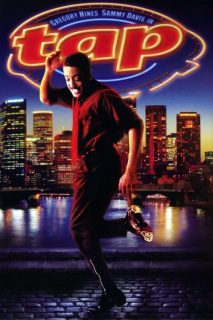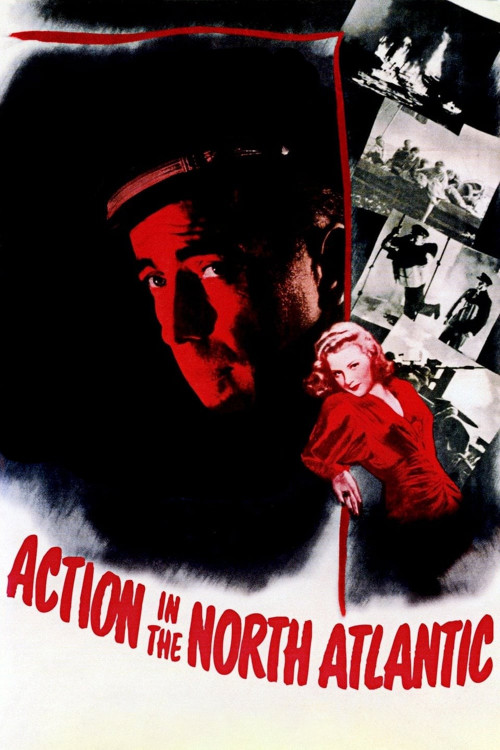
- Year: 1943
- Released: 12 Jun 1943
- Country: United States
- Adwords: Nominated for 1 Oscar. 1 nomination total
- IMDb: https://www.imdb.com/title/tt0035608/
- Rotten Tomatoes: https://www.rottentomatoes.com/m/action_in_the_north_atlantic
- Available in: 720p, 1080p,
- Language: English, German, Russian, Norwegian, French, Spanish, Dutch
- MPA Rating: Passed
- Genre: Drama, War
- Runtime: 126 min
- Writer: John Howard Lawson, Guy Gilpatric, A.I. Bezzerides
- Director: Lloyd Bacon, Byron Haskin, Raoul Walsh
- Cast: Humphrey Bogart, Raymond Massey, Alan Hale
- Keywords: attack, navy, u-boat, convoy, north atlantic,
 | 7.0/10 |
 | 71% – Audience |
Action in the North Atlantic Storyline
Lieutenant Joe Rossi is 1st Officer on a Liberty Ship in a great convoy bound from Halifax to Murmansk. After German subs crushed the convoy, his ship loses the convoy and is heading alone to Murmansk. In spite of attacks by German planes and subs, he get the ship to Murmansk.
Action in the North Atlantic Play trailer
Action in the North Atlantic Photos
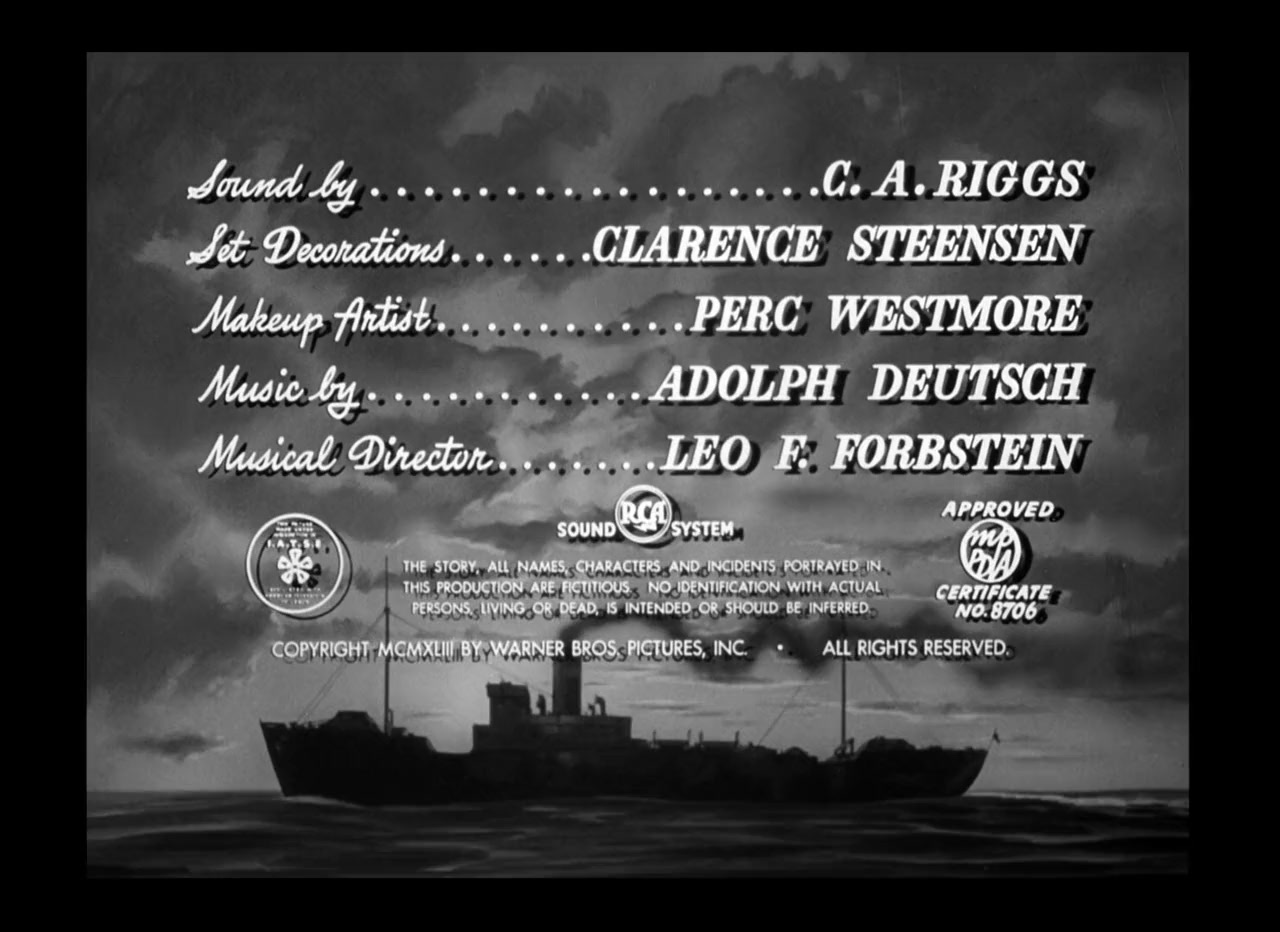
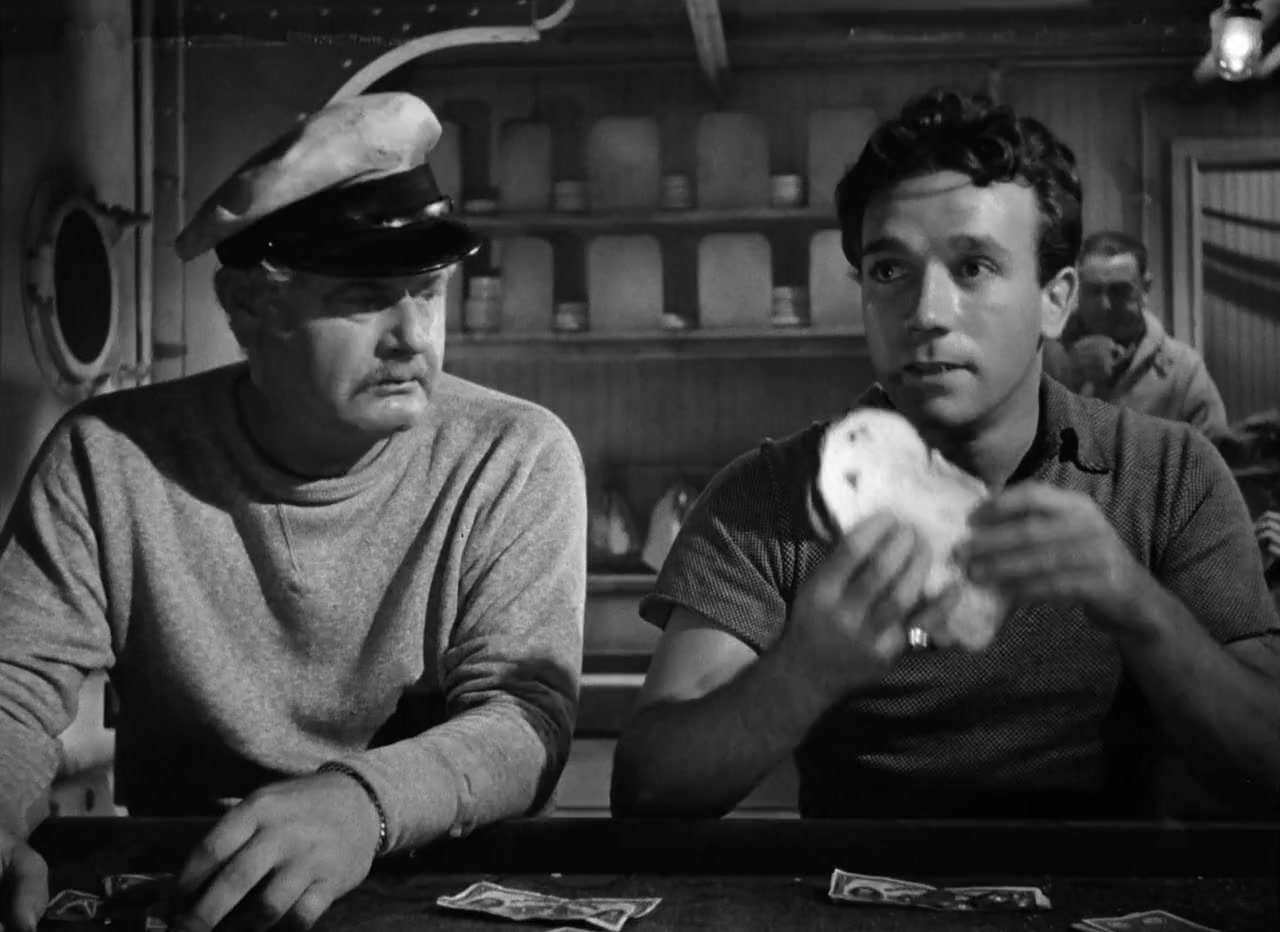
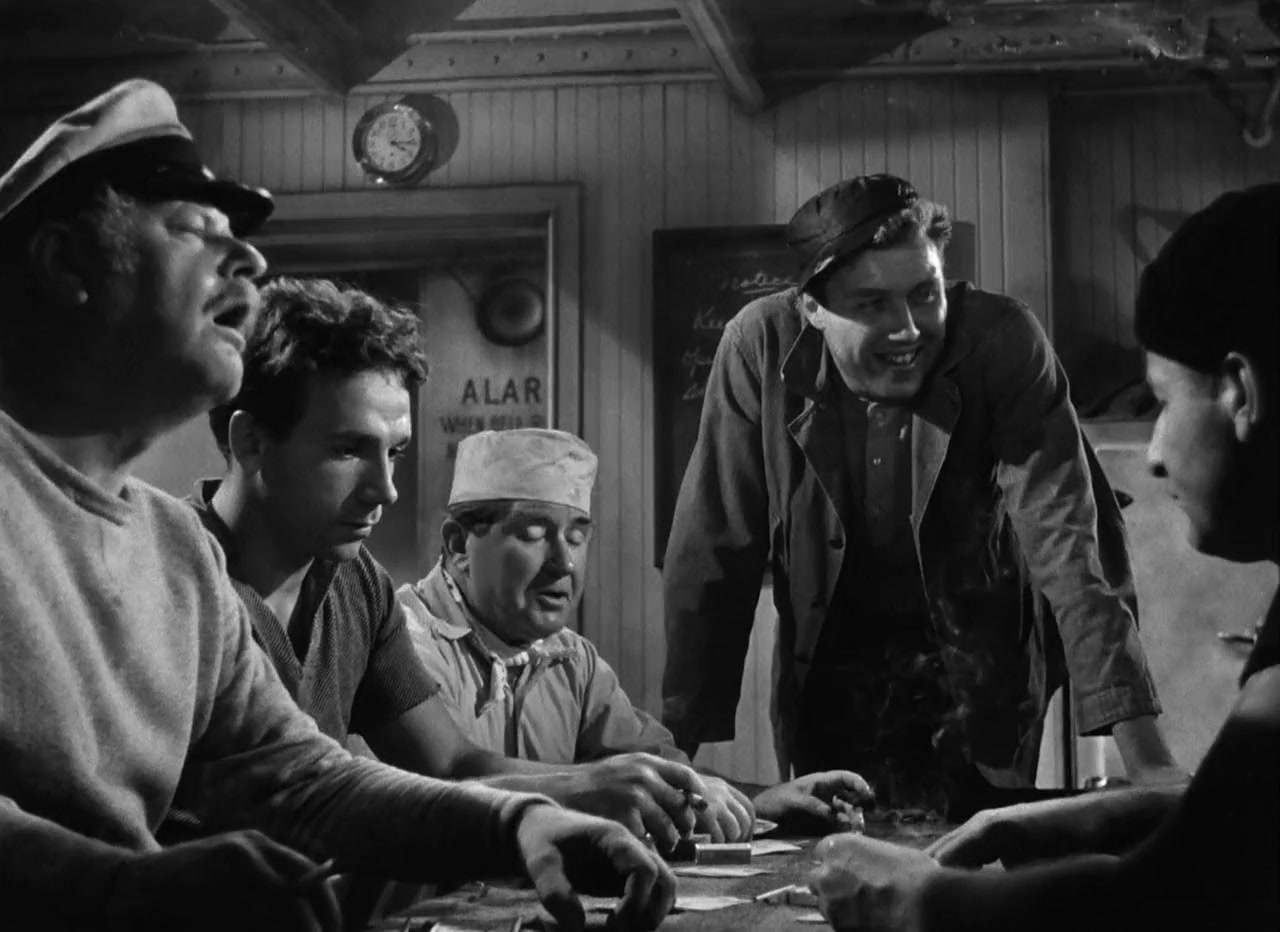
Action in the North Atlantic Torrents Download
| 720p | web | 1.14 GB | magnet:?xt=urn:btih:D09E1858855916FD326DDF6F2660A98AF65A4C24 | |
| 1080p | web | 2.12 GB | magnet:?xt=urn:btih:5EBAA315FA500F7784559DF7D188DA0F278A6C87 |
Action in the North Atlantic Subtitles Download
| English | subtitle Action.In.the.North.Atlantic.1943.720p.WEB-DL.AAC2.0.H.264-alinto | |
| Serbian | subtitle Action.In.the.North.Atlantic.1943.720p.WEB-DL.AAC2.0.H.264-alinto |
Action in the North Atlantic Movie Reviews
Stirring, well-acted, realistic tribute to the U.S. Merchant Marines…
Despite plenty of wartime propaganda and the usual amount of clichés and other staples of WWII action melodramas, ACTION IN THE NORTH Atlantic is given a boost by some of the best staged action scenes ever featured in a Warner Bros. movie of that era.
The realism is startling considering that special effects then included no computer engineering. The script is basically the story of U.S. Merchant Marine survivors of a battle determined to sink the ship that ruthlessly cut into their lifeboat. The climax has them getting their revenge on the Germans after a fierce battle that concludes with the Americans and their farewell ceremonies to shipmates killed during battle. Bogart is given some flag-waving lines to read and the film concludes with a commentary using FDR’s voice to salute the Merchant Marines and their contribution to the war effort.
Lloyd Bacon directs with a firm, vigorous treatment of all the battle scenes and only occasionally does the film slow down when dealing with the domestic front. Julie Bishop does a nice job as Bogart’s girlfriend and later wife, while Raymond Massey shares his domestic homecoming with Ruth Gordon as his wife. But the film’s merits are chiefly due to the action sequences, which are by far among the best ever featured in a Bogart film.
Action is what you get here…but don’t expect anything deep. Bogart fans won’t be disappointed. Dane Clark plays his usual hothead role with gusto and Alan Hale is a welcome addition to the supporting cast.
The Cruel Sea
It’s hard to dislike the Warner Brothers’ war movies of the 1940s despite any weaknesses they might have had. They are inexpensive, unpretentious, and exciting. And, like most Warner Brothers flicks, they’re oriented towards a working-class audience. No fancy philosophizing, no pop psych profundities, no ontological Angst.
“If dis fog gets any thicker we’ll have to cut our way through it.” “Yeah. A good day to be at home with a blond and a book.” “Oh, yeah? When did you loin to read?” “Who said I could read?” “But you said –” (Dissolve) There are the usual familiar faces in this one: Bogart, Massey, Alan Hale, Dane Clark, Sam Levene (great as always).
Basically, the story is that the crew of an American freighter is torpedoed in mid-Atlantic and their lifeboat is rammed by the submarine. Picked up, they later gather and form the crew of a new Liberty ship, the Sea Witch, and assigned to a large convoy destined for Murmansk, USSR. The convoy is attacked by a Nazi wolfpack and scatters. One submarine follows the Sea Witch and radios its position to the Luftwaffe. Two Nazi planes are sent out to strafe and bomb the ship but both are shot down after causing considerable damage to the ship. The airplanes are curiously antiquated looking. I think the models are supposed to represent Heinkel HE 59s. Finally, the skulking submarine surface to shoot it out with the Sea Witch, fooled into thinking the Liberty ship is mortally wounded by a torpedo. (Cf., “The Enemy Below.”) The Sea Witch rams the submarine and sinks her and the German crew dies screaming as water pours in.
The men killed at sea are buried with proper ceremony, their names and ranks read off, one by one — John Murphy, Joe Anderson, Frank Ribetti, Morris Goldberg — and Bogart after reading the burial service throws in his own two cents worth about how “it could be any one of us lying there.” The screenplay is by John Howard Lawson, one of the “Hollywood Ten” who was blacklisted after the war for his membership in the communist party. The Red propaganda is visible to the naked eye. Lawson has the temerity to suggest that Russia and the USA fought on the same side in World War II.
Those Liberty ships, manned by civilian merchant seamen, were really Doozies. The first series was slapped together by Kaiser. It took a few days to build each ship from keel to tiptoptagallant. They were small, unarmed, uncomfortable, and underpowered. They were built in three modules that were then joined, and they had a tendency to come apart at the seams in heavy weather.
And the North Atlantic offers what is probably the lousiest weather in the northern hemisphere. The top speed of the ships was about 12 knots. Nicholas Monserrat, in his memoirs, describes being aboard an escort vessel in a convoy and watching the ships beating against a headwind that reduced their flank speed to that of a man walking.
Anyway, there is a romance thrown in here so Bogart can be married, but it’s short, unobtrusive, and unsentimental. And, as in practically unavoidable in films describing duels between ships and submarines, there is as much suspense as there is action. At times the sea is more of a threat than the enemy is. The action scenes, when they come, are fast, arousing, and a little confusing.
As a footnote, the Merchant Marine was not well thought of by the Armed Services because, as civilians, their pay rate was far higher than that of enlisted men. Nevertheless, it was extremely dangerous duty and the percentage of men killed at sea was higher than in any branch of the service.
A good example of Warners’ craftsmanship, a simple tale, skillfully done.
One of the very best wartime propaganda films
The term “propaganda” has taken on a very negative connotation, though propaganda can also be a very positive thing–encouraging the masses through logical and/or emotional appeals to get on the bandwagon on a certain topic. In this case, the effort was noble–encouraging people to understand why we were fighting the Axis powers as well as drumming up their support. Now these types of films were made in the hundreds in the USA during the war and many of them are pretty forgettable. However, this might just be one of the very best due to its magnificent writing and acting. Plus, in many ways it’s similar to the British wartime film IN WHICH WE SERVE (1942)–but I think that ACTION IN THE NORTH Atlantic is actually a bit better film. Much of this is because the acting is at least equal to the British film (Humphrey Bogart and Raymond Massey versus Noel Coward and John Mills in the 1942 film) and the story is a bit more exciting in ACTION IN THE NORTH Atlantic. Plus, I admired how the often forgotten men of the merchant marine were shown to be heroes–after all, a lot of them died transporting supplies to Britain during the war.
Both films excelled because unlike some jingoistic wartime films, the Allies were NOT shown as super-humans who could do ridiculous things (like in the movie AIRFORCE where a B-17 shoots down fighter plane after fighter plane–something that just could never have happened). In fact, both films feature ships being sunk right out from under the stars in the first half hour of the film! But here’s where the films really succeeded, as they showed the indomitable human spirit that despite losses, continues to bravely and without too much complaint do their job. Balancing this need with the families back at home make these both stellar films. In fact, now that I think about it, I STRONGLY recommend you see both. Yes, they are similar, but also different enough to provide a lot of entertainment and wonderful insight into our history.

